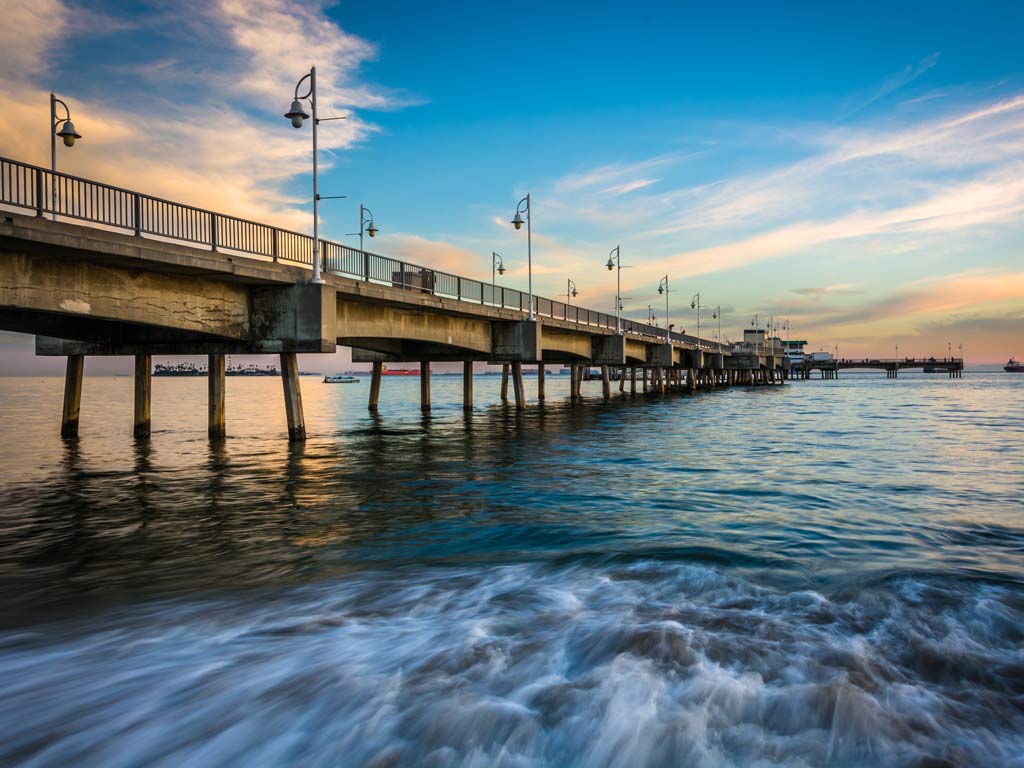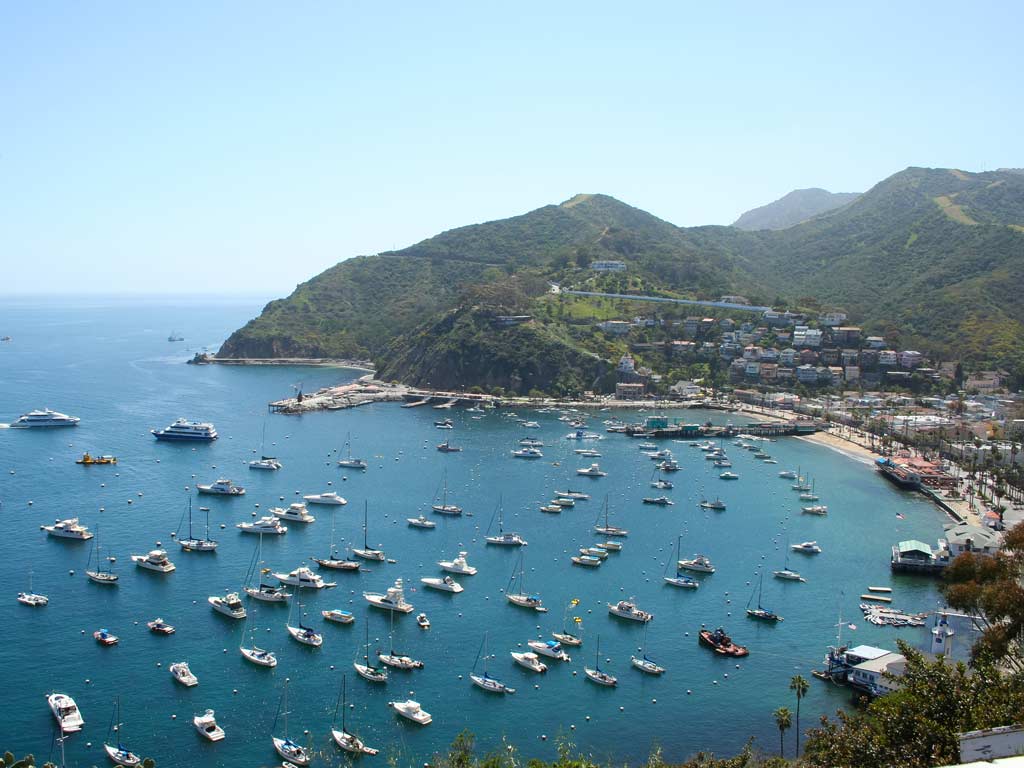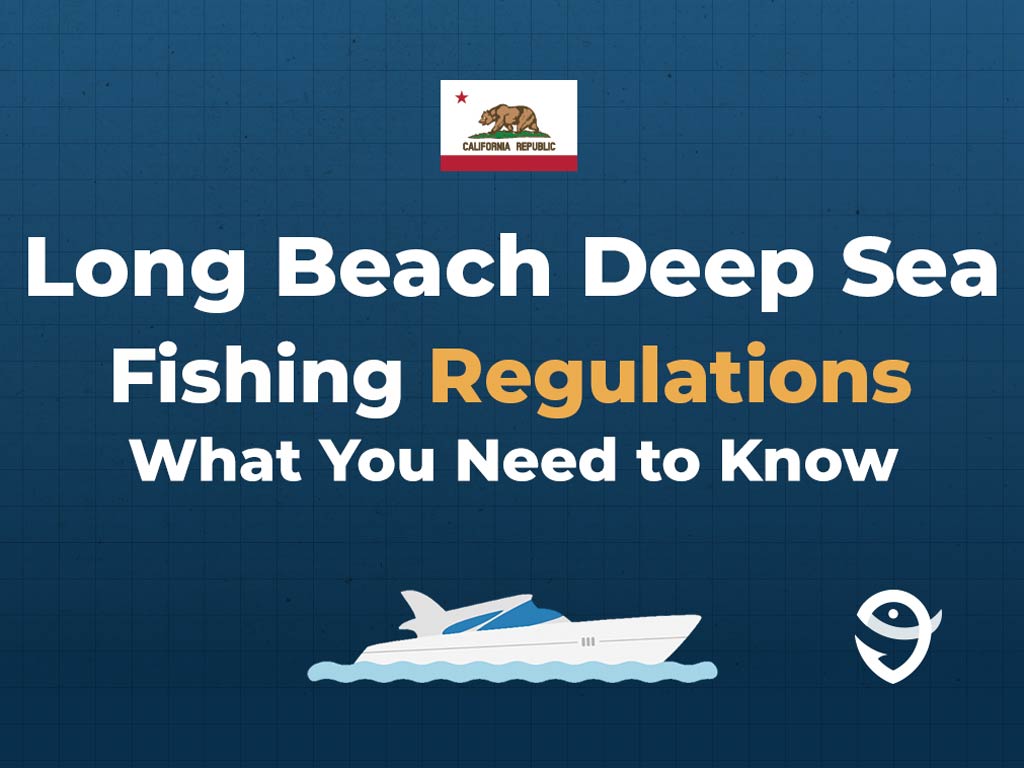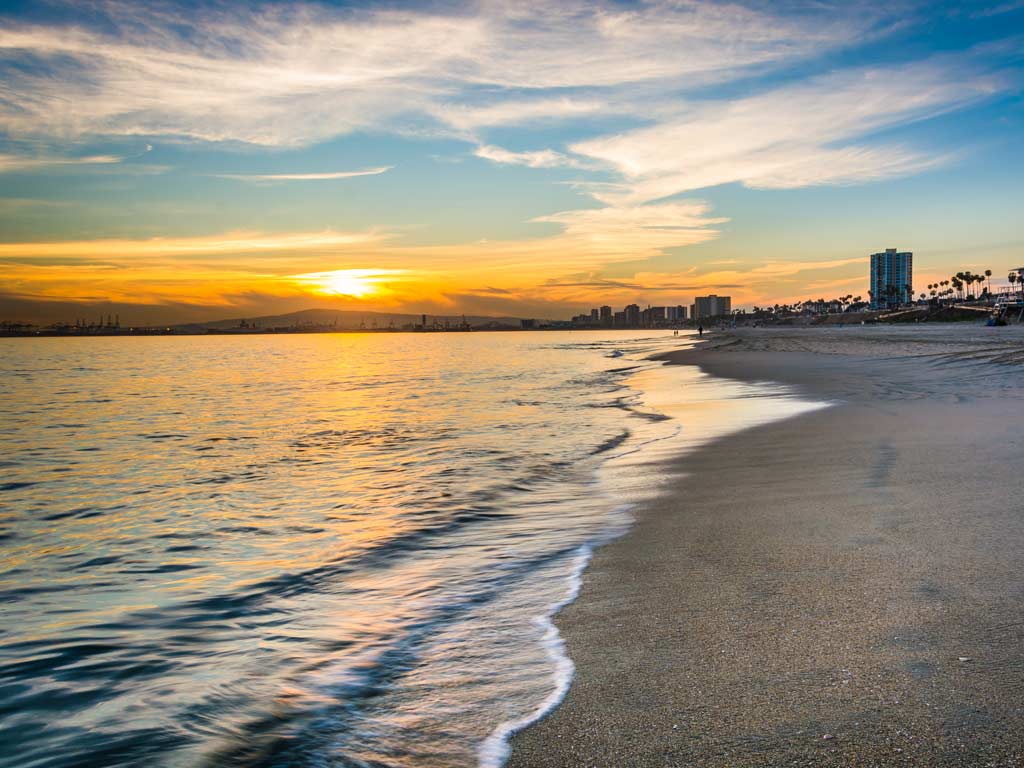Whether you’re from the West Coast or someplace else, you’ve likely already heard about the amazing offshore angling California offers. However, even if you compare it to the rest of the Golden State, deep sea fishing in Long Beach really stands out. It’s the ideal starting point for adventurers looking to experience some of the most outstanding action out there.

Why Long Beach? First of all, the city offers easy access to islands such as Catalina, San Clemente, and Santa Barbara. Around these islands, you’ll find underwater kelp jungles, providing a home for all kinds of fish. If that’s not enough, you’ll also get to explore different ledges and dropoffs where some of the most fearsome pelagics roam.
In this article, we’ll try and paint a picture of just how thrilling the deep sea fishing in Long Beach is. You’ll get to read about the locations to explore and which species you could face. In addition to that, we’ll cover the best times to go fishing and a few basic regulations. So if you’re ready, let’s get into it together.
Top Deep Sea Fishing Targets in Long Beach
There are many different species you’ll encounter while fishing along this portion of Southern California. In fact, you’ll get to target both various bottom fish and, as we mentioned before, big game fish that even the most seasoned anglers will find challenging. Let’s take a look at some of them.
Rockfish
Depending on which coast you find yourself on, the term Rockfish will refer to completely different fish. On the East Coast, Rockfish are Striped Bass. However, in California, Rockfish encompass a whole range of bottom-dwelling creatures. These include Sculpin, Black Rockfish, Boccaccio, Vermillion Rockfish, and at least a few dozen other species.

No matter which type of Rockfish you hook into, they’ll be fun to go after and usually great to eat. These fish are also a great target if you’re new to deep sea fishing. Rockfish usually hide on the bottom so all you really need to do is drop the bait down to the ocean floor and see if you can get them to bite.
The waters off the coast of Long Beach feature many different Rockfish holes. You’ll find them along different reefs and underwater debris. For boat-based anglers, the Rockfish season opens in March and lasts until the end of the year. Just keep in mind that certain Rockfish, such as Bronzespotted, Yelloweye, and Cowcod, can’t be harvested. This means you’ll need to carefully identify the fish you reel in.
Yellowtail
Another beloved species you’ll come across fishing out of Long Beach is Yellowtail. These fish are a local favorite and for a good reason, too. Yellowtail pull and fight extremely hard. What’s more, they’re also smart and will often dash into the kelps to shake you off. And, once you catch them, Yellowtail will make for prime sushi material.

To get in on the best Yellowtail action, you’ll have to ride out to Catalina or San Clemente Islands. While there are smaller Yellowtail closer to shore, the islands are where you’ll get your chance to wrestle the big ones. Besides the islands, you’ll also find Yellowtail hiding under offshore kelp paddies. Wherever you go, rest assured that these fish are absolutely worth the journey.
Dorado (Mahi Mahi)
As you troll and explore the waters between the islands we mentioned previously, you’re likely to hook into some Dorado. These colorful fish usually begin showing up in SoCal around May. The fishing then gets really hot during summer, before they eventually move on when the waters start to cool down.

Although Dorado can put up quite a decent scrap, they’re generally not as tenacious as some of the other pelagics. So if you’re new to big game fishing, these fish will make for perfect practice. Like the previous two entries, Dorado are fantastic table fare. There are also no specific regulations regarding them, so all you have to abide by is the general bag limit.
Bluefin Tuna
While all the species you’ll hook into around these parts are exciting in their own right, Bluefin Tuna are in a league of their own. Anglers will debate which fish fights the hardest. However, when you hook into a Bluefin that weighs a few hundred pounds, pulls like a tow truck, and has the stamina to fight for hours, you’ll find out first-hand why these fish are so respected.

To find Bluefin Tuna, you’ll have to make a run offshore from Long Beach. As you make your way to the deeper waters, you’ll use the boat’s sonar to scout for any trace of fish. When you’ve found a Tuna school, you’ll race to intercept it. At that point, you can cast to the fish or slow-troll to entice the bite. Just remember that Tuna are among the toughest game out there. So if you haven’t fought big fish before, it’s wise to start with something smaller first.
And More!
There are other species of Tuna prowling through these waters as well. Sure, Yellowfin and Albacore Tuna don’t get as big as Bluefin, but they’ll still give you a seriously thrilling battle. Among other pelagics, you can also hook into the occasional Wahoo, as well as Blue and Striped Marlin.

The deepwater structure also provides a habitat for tasty Lingcod and Halibut. And if you fish the kelps, you’ll often see the likes of White Seabass and California Sheephead take your bait. Finally, let’s not forget all the Sharks you can target while deep sea fishing in Long Beach. The fearsome Mako, the menacing Blue, and huge Thresher Sharks all hunt in these waters. It all depends on when you visit and what you desire to reel in the most!
What anglers said about Deep Sea Fishing in Long Beach
How to Go Deep Sea Fishing in Long Beach
But before you can start catching fish, you’ll have to plan your trip. To begin with, you’ll need a boat that can take you to the offshore grounds and handle the open waters comfortably. Then, you’ll have to consider all the fishing equipment you’ll need to catch the fish. Luckily, if you hop aboard one of the many Long Beach deep sea fishing charters, the captain will provide you with all of that and more.

Besides the boat and the gear that you’ll get if you fish on a charter, you’ll also have the benefit of having a knowledgeable, local guide leading you. Your captain will be able to tell you exactly what’s biting at the time of your trip and teach you the best methods to land that prized catch. Let’s look at some of the techniques you might use on your deep sea trip…
Trolling
Whether you’re fishing for Tuna, Dorado, Billfish, or other pelagics, trolling is one of the main techniques you’ll use. It’s a proven method when it comes to reeling in these fish, and it’s a fairly straightforward one. It involves setting up a trolling spread, baiting the hooks, and trailing the bait behind the boat so it appears as if they’re swimming through the water.

Since it doesn’t involve casting, trolling is suitable even for first-time anglers. That being said, while the technique itself is simple, the fish you’ll encounter in the deep seas are still challenging. To put it plainly, you shouldn’t aim to fight Marlin on your first outing but you’re more than welcome to target Mahi Mahi, smaller Tuna, or other fish such as Bonito.
Bottom Fishing and Jigging
On the other hand, if your belly’s growling for some tasty Rockfish, Halibut, or Sheephead, you’ll have to find them all the way down on the seafloor. These fish like to lurk around different underwater wrecks and reefs. This means bottom fishing is the best way to lure them in. You’ll scan the depths with the fishfinder and simply lower your bait all the way down once you see some fish appear.

With jigging, you’ll also drop your bait vertically, but you won’t always go all the way to the bottom. Instead, you’ll lower your jig to the depth where you spot the fish. Then, you’ll start jigging the rod up and down so it looks as if your bait is moving around. A variation of this technique, called yo-yo fishing, is used when targeting deepwater Yellowtail. It involves dropping a jig all the way to the bottom and reeling it in quickly while taking occasional pauses.
When to Go Deep Sea Fishing in Long Beach
While there’s generally no closed season when it comes to deep sea fishing in Long Beach, there are a few things to keep in mind when choosing the ideal time for your trip. First of all, many species, such as Rockfish or Sheephead can’t be targeted from boats between January and the end of March.

This being said, species such as White Seabass, Yellowtail, and Halibut can be fished for even during winter. Or, you can simply do some Shark fishing instead. As the boat fishing season opens and the waters start heating up, you’ll see more and more species show up in the area.
The peak season starts around June and lasts until fall. During this time, you’ll see Tuna, Marlin, Dorado, and other pelagics race along the SoCal shores. Summer is also when you’ll get to enjoy the best Yellowtail fishing. So while there’s always something to catch, summertime offers by far the most variety.
Where to Go Deep Sea Fishing in Long Beach

Once you’ve figured out what you want to catch and when you want to visit Long Beach, it’s time to consider where you want to fish. Aboard a charter, you won’t have to worry too much about picking the right spot, as you’ll have a captain who’ll know where the action is. However, here are some options to consider:
- Catalina Island: Known for its unique wildlife and natural beauty, Catalina lies just 29 miles offshore from Long Beach. There are several kelp forests surrounding the island. These provide a habitat for all kinds of species, including big Yellowtail, White Seabass, California Sheephead, and more.
- San Clemente Island: As you leave Catalina and move further offshore to San Clemente, you’ll get to add pelagics such as Mahi Mahi, Tuna, and even the occasional Marlin to your list of targets. Around the island itself, you’ll once again have the opportunity to fish for homeguard Yellowtail, White Seabass, and other kelp species.
- Santa Barbara Island: While the waters around Santa Barbara itself are designated as a marine reserve, there are several spots just outside that area where you can fish. The species you’ll find here are similar to what you’ll find around the previous two islands. This means plenty of Yellowtail, Tuna, White Seabass, Sharks, and more.
- San Nicolas Island: Finally, there’s also San Nicolas Island, around 60 miles away from Long Beach. Although there’s a whole range of pelagics you can hunt for along the way, the waters near the island itself are actually a bottom fishing heaven. Here, you’ll get to catch your share of trophy Lingcod, Halibut, and all kinds of Rockfish. Since the island is quite far offshore, many anglers take overnight trips to San Nicolas and return with two days’ worth of fish.
Long Beach Deep Sea Fishing Rules and Regulations

Before you head out, you’ll just need to buy a California Fishing License. If you’re only fishing for one or two days, you won’t need to get the Ocean Enhancement Validation. However, if you’re staying for longer than that, you’ll need to pay an additional fee. Most anglers aged 16 and older will need to get a license, but there are some exceptions. You can take a look at these in our California Fishing License article.
When planning your trip, you should also get up to speed on the fish regulations. These can vary from year to year so if there’s a particular species you’d like to catch, it’s a good idea to check whether its season is open. You can get a full rundown of fish seasons, size, and bag limits by visiting the California Department of Fish and Wildlife website.
Long Beach: Your Gateway to Deep Sea Fishing Glory

If you’re planning a trip to Catalina or any of the islands lying beyond it, you’ll have a hard time finding a better starting point than Long Beach. Add to that all the different reefs and kelps you can explore as you make your way offshore, and it becomes clear why so many anglers fall in love with this part of SoCal. These waters never cease to surprise, giving you the chance to discover something new every time and reel in plenty of fish.
Have you ever been deep sea fishing in Long Beach? What was your most memorable catch? Let us know in the comments below!


